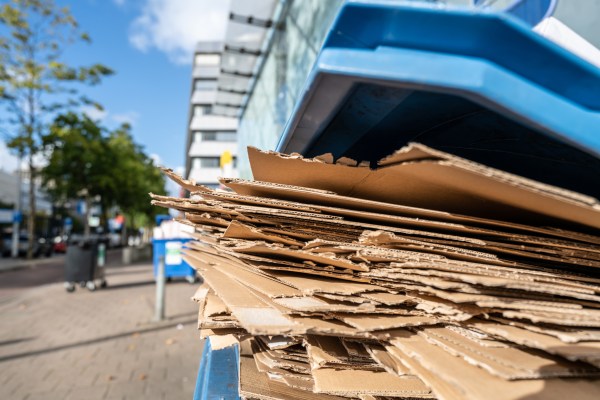It’s the middle of the holiday season here in the U.S., that magical time between Thanksgiving and Christmas when stores are packed with bodies and porches are piled with packages.
All those packages produce a lot of waste — anywhere from 33 million tons to 51 million tons annually, depending on the estimate. A majority of it gets recycled, but there’s still a significant fraction that finds its way into landfills.
It’s the last day of the TechCrunch+ Cyber Monday sale! Head here for details, and don’t miss out!
One startup has a plan to slash that fraction while also cutting the carbon footprint of people’s homes. Buffalo-based CleanFiber takes used cardboard boxes and turns them into cellulose insulation that can be blown into the walls and attics of new and existing homes.
As building products go, cellulose insulation is pretty special. Because it’s insulation, it lowers energy use. It’s relatively high performance and low cost. And it’s made almost entirely from recycled materials, which means it lowers a building’s embodied carbon, or how much pollution is wrapped up in its materials.
Typically, cellulose insulation is made by shredding old newspapers, but as the newspaper industry has declined over the last 20 years, so too has the supply of newsprint.
“At one point in time, there were about 13 million tons of newsprint produced annually in North America,” CleanFiber CEO Jonathan Strimling told TechCrunch. Today, “it’s on the order of 1 million tons and continues to fall.”
That decline got industry insiders interested in using corrugated boxes in lieu of newsprint. But they knew they couldn’t reuse the same processes. Bales of newsprint are pretty homogeneous, whereas bales of old corrugated containers are laced with shipping labels, plastic sleeves and various kinds of tape. Simply shredding that and sending it through a cellulose blower would gum up the works and make for some very unhappy installers.
So the team partnered with scientists at the University of Maine and, by 2009, they had developed a process to chemically treat the cardboard to remove any unwanted materials and compounds while also adding fire retardants. They founded UltraCell, the company’s name at the time. But UltraCell struggled to commercialize the product. In 2012, Strimling was recruited to help move things along.
Strimling, who was trained as a mechanical engineer, was at the time CEO of an email delivery and marketing company. When he came to CleanFiber, he found the market appealing compared with the cutthroat SaaS world.
“In that world, you always have to worry about some new technology or upstart that swings in and starts stealing your customers or your share,” he said. “One of the things I liked about this business is that our technology is really unique and hard. And that gives a lot of defensibility from a business perspective.” Getting CleanFiber’s product to where it is today took “literally thousands of experiments.”
CleanFiber inherited UltraCell’s patents and has developed its own over the last several years, Strimling said. The result, he said, is cellulose insulation that’s not only free of contaminants but also low on dust. It’s a combination that makes installers happy and has made for a smooth sales process, he added. It helps that CleanFiber’s product costs no more than the competing products.
Today, the company is closing a $10 million Series A-2 funding round from AXA IM Alts, TechCrunch exclusively learned. The company had previously raised a total of $40 million and has a $14 million debt facility. The new funding will go toward expanding CleanFiber’s production capacity to meet demand. Existing customers have been asking for four times the amount of product that CleanFiber has been shipping them, Strimling said.
While the company isn’t profitable yet, he thinks CleanFiber will be within a year or so. All that’s holding the company back today is production capacity. “With the capacity we have coming online, that is within reach.”
Finding new customers for that new capacity doesn’t seem to be a problem. Once installers start using the product, the only hurdle CleanFiber has to clear is getting them enough.
“Our typical sales process is incredibly straightforward. We offer free samples to anyone who’s in the business of installing cellulose. They try our products, and then almost without exception they want a truckload as soon as we can get it to them,” Strimling said.
As a result, he added, “we have less than 1% monthly churn, and our net revenue retention is way over 100%, which means we’re growing existing accounts.”
Plus, the overall market is growing, he said, and the Inflation Reduction Act, which offers rebates for owners to bulk up their insulation, certainly won’t hurt. “We think the industry has got a lot of room to grow,” Strimling said. “Nothing happens overnight in the building market, but we’ve got nice tailwinds.”
